Note: I was provided a complimentary copy of Between Two Cities for the purpose of review. The thoughts and opinions in this review are my own.
At a Glance: Between Two Cities
Year Published: 2015
Designers: Matthew O’Malley, Ben Rosset
Publisher: Stonemaier Games
Artist: Beth Sobel
Player Count: 1-7
Editor: N/A
Suggested Age (BGG/Me): 14+ (BGG) / 8+
Playing Time: 20-30 minutes
Theme: City, urban planning
Mechanisms: Tile laying, tile drafting, set collection
Find more about Between Two Cities by visiting Stonemaier Games online on Facebook, Instagram, and their website!
“It was the best of times, it was worst times.”
― Charles (what the) Dickens, A Tale of Two Cities
Between Two Cities Intro Story: Contractual Victories
Being the best city contractor was nice and all, but when two rival cities hired you to make theirs better than the other, that’s when things get tricky. Obviously, it wouldn’t do to focus too much time and effort on one single city. If that were to happen, the other city would eventually realize that they’d been duped. So, in order to appease both clients, Alvin G. Magtayo decided to play both clients at once.
It wasn’t easy. In fact, it would have been downright impossible had he not had some outside help. Working with two other contractors, Alvin built the best cities he could with the resources available. Sometimes he took what was meant for one city and planned it into the other; it didn’t matter, he rationalized, since each party didn’t have a detailed report of what each was supposed to receive.
A factory here and a shop there, and the cities were completed at the same time. When the award ceremony took place later in the year, both cities knew that theirs would reign supreme. And, as expected, one city overtook the other by a few mere points on technicalities. However, both cities were surprised as a third city took all the glory.
As it turns out, the two contractors who were helping Alvin worked together on their own city, which blew the Alvin’s two cities out of the water.
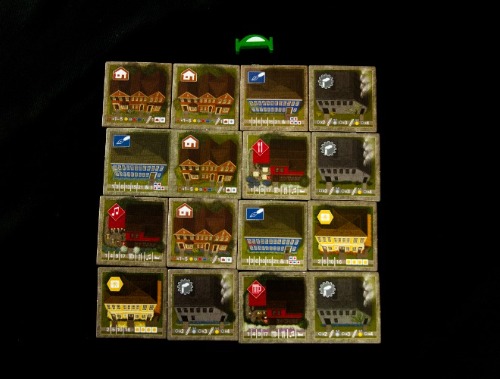
Overview/Roadmap
This review has two parts. First, there is the Short Review, where various aspects of the game are discussed. Then comes the Gameplay Review, in which the setup and gameplay are discussed in detail, along with initial thoughts. Following the Gameplay Review section are some final thoughts and a final verdict of the game. Feel free to jump around, or read it all in one go.
Between Two Cities: Short Review
Between Two Cities is a tile-laying-and-drafting game in which players work in tandem with the players on either side of them to create the best cities possible! Out of the two cities you work on (one on each side of you), only your lowest scores, so don’t put all your eggs tiles in one basket! Between Two Cities is simple to learn, quick to play, and quite enjoyable at all player counts (even at one and two players). Really though; I was quite impressed with the solo and two-player variants!
Immersion
Theme-wise, you’re building two city centers, and there isn’t much story to go along with it. However, I noticed that in all of the games I played (at low and high player counts), each player was deeply immersed in building their cities. The planning, the thinking, and the execution sucked us all into the gameplay.
Theme
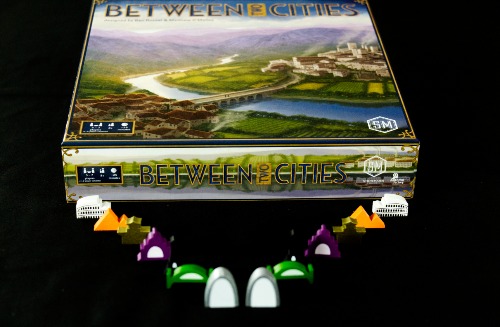
As mentioned, the theme is simple: building a city center. Fans of city-building games would likely enjoy this, and while those aren’t always my favorite types of games, I still found the theme to be engaging in the game’s execution.
Art & Components
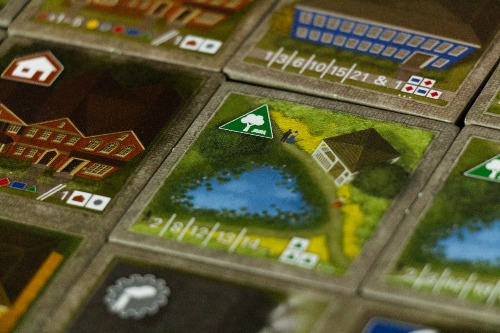
The art is your basic city buildings, complete with houses, factories, parks, and various types of businesses. However, the art is well done. It’s not cheesy, and it certainly helps define the theme.
There are seven pairs of wood tokens, each pair representing a famous landmark (including the Gateway Arch in St. Louis, which is where Stonemaier Games is based out of). These tokens are used to make scoring easier, and hallelujah to whoever thought of doing it this way, because it really does make scoring a lot easier. They’re your standard wooden tokens, but they do look nice. There’s a large scoreboard that is used only at the end of the game. While I enjoy its size, I am still not entirely convinced it was necessary. Still, it’s nice to have. The rest of the components are cards and tiles. The cards are used for determining seating order, player aids, and for the solo variant. The tiles are thick cardboard—just what you’d expect them to be! Nothing fancy, but they work fine and I have no complaints.
Standout Performances
- Two solid solo variants!
- Excellent two-player variant
- Lots of player-to-player interaction
- Quick setup
- Easy to learn with plenty of good decision making throughout the game
- Quick gameplay
Breaking the 4th Wall
In theater, breaking the fourth wall refers to when characters (or something else) directly address the audience, thus pulling them out of the narrative and making the astutely aware that they are, in fact, watching a performance and that’s it’s not actually real.
The worse things I’ve heard about this game (from those I’ve played with) are that it’s either too light, or it doesn’t make a good one- or two-player game. Well, that’s opinion. My wife really enjoys the two-player variant, and my in-laws even wrote it down as one to buy for themselves (even though they live next door to us). So the light strategy is perfect for them, but it’s still deep enough to be fun and engaging for my game group. It’s always nice when the worst criticisms are based on opinion, because there’s a good chance you already know what you do and don’t like, so their poor reviews are not based on the quality of the game, but rather on what they hoped it might have been.
Between Two Cities: Gameplay Review
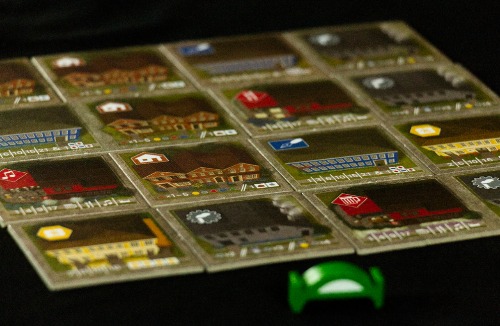
First Impressions
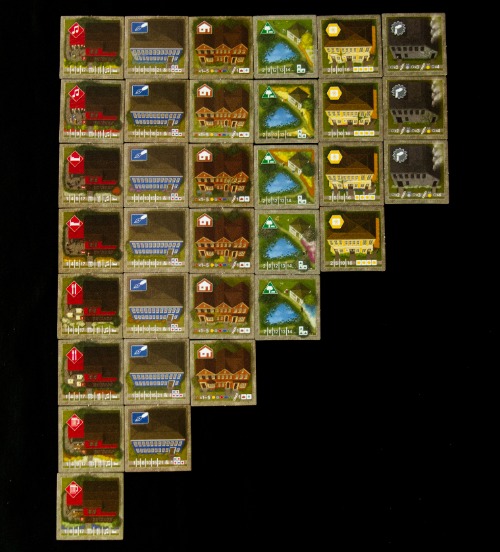
When I sat there punching out the tiles, I was a little surprised at the amount of tiles present. However, I quickly learned that there was nothing to fear, and that there were only six types, and learning how those types scored was simple enough. My first two games were solo (to get the hang of it), and the first solo variant was incredibly easy to follow, and lots of fun to boot. The second, more advanced solo variant was a little more complicated, but after a few turns, I understood how the AI worked and it all came together nicely.
First impressions from playing with others was all positive. Those I played with (who hadn’t played before) also had positive things to say after their first play. So first impressions, while not always accurate of a game, were pretty spot on to the overall feel of Between Two Cities.
Setup
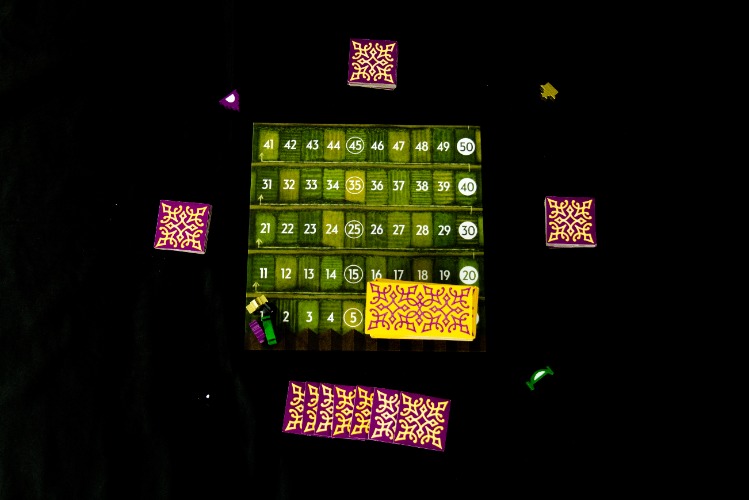
Setup is quick and easy—the most time consuming part is flipping all the tiles face down in the box lid! Once all tiles are flipped over, players take seven random tiles to form their hand. Players get a player aid (which tells how each building scores), and a building token is placed to the left and to the right of each player (one token between two players). These tokens will represent the city being build on the score track at the end of the game. There should also be a stack of “duplex” tiles (double-wide tiles with two buildings on them) placed nearby for use in the second round.
And that’s pretty much it! I love a game that doesn’t take a lot of setup, and Between Two Cities is solid in that regard. Plus, it plays great, too, so that’s also awesome!
Gameplay
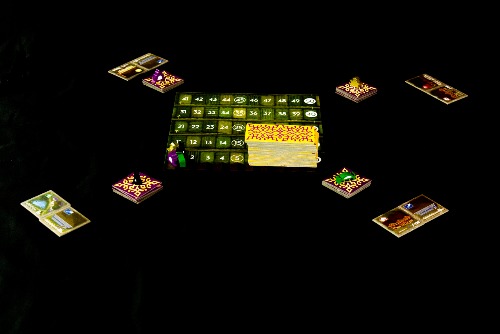
To start, players take two tiles from their hand and place them face down in front of them. Then, each player passes the remaining five tiles to their left. Once all players have selected two tiles, they are all revealed at the same time and players can discuss with those next to them about where they should place each tile. Of the two tiles selected, one goes into the city on that player’s left, and one goes into the city on that player’s right. Certain buildings have score better in certain configurations, so there is some strategy to discuss. Play continues in this way until there is one tile left in each player’s hand, after which that tile is discarded and the players place their remaining two tiles.
Then it’s the duplex tiles. Players take three random duplex tiles, select two to keep, and then discuss with their neighbors where to play those larger tiles. After that, players draw seven new small tiles and this round is played the same as the first round, just with the tiles being passed to the right instead of the left.
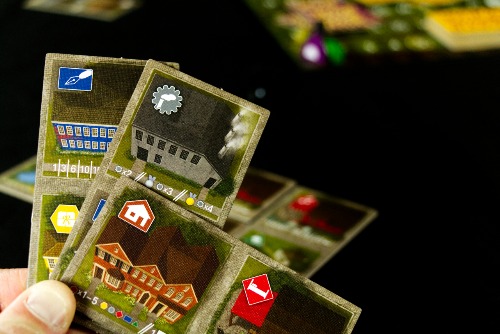
When no tiles remain, and each city is in a 4×4 square (cannot be a different layout; it must be 4×4), each city is scored. Scoring cities takes place by building type, one building type at a time, until all buildings are scored. The matching token on the scoreboard is moved up when scoring its city, which makes it easy to keep track of everything.
Thoughts on Gameplay

I like it! I love how fast it is to play, yet there is still some good thought and strategy to put into it. Between working with other players (who you are competing with), drafting, and the various building/tile scoring rubrics, there’s a lot to consider! I think one of the best things about Between Two Cities is that it is enjoyable for gamers of varying complexity preferences. My in-laws really enjoy it, it was great at game night with seasoned veterans who enjoy complexity, and my wife enjoyed it quite a bit as well.
With the quick setup and engaging gameplay, I can see Between Two Cities is going to hit the table a lot. My wife likes, it my in-laws like it, I like it, and it’s great as a solo game. What more could I want?
Solo Play

I was skeptical about the solo variant, simply because the box says 3-7 players. How on earth were they supposed to simulate two extra players? But, amazingly enough, they made it work. There are actually two solo variants. The first one is super basic, but plays super fast and is a good way to learn the game, or get in a game in under 10 minutes. The second variant includes the solo Automa cards that show what your neighbor AI will give you, and what will go into the AI-controlled city. It works really well. I’m extremely impressed with the solo variants, and love that they play quickly, since I don’t always have too much time for solo play.
Between Two Cities: Final Thoughts
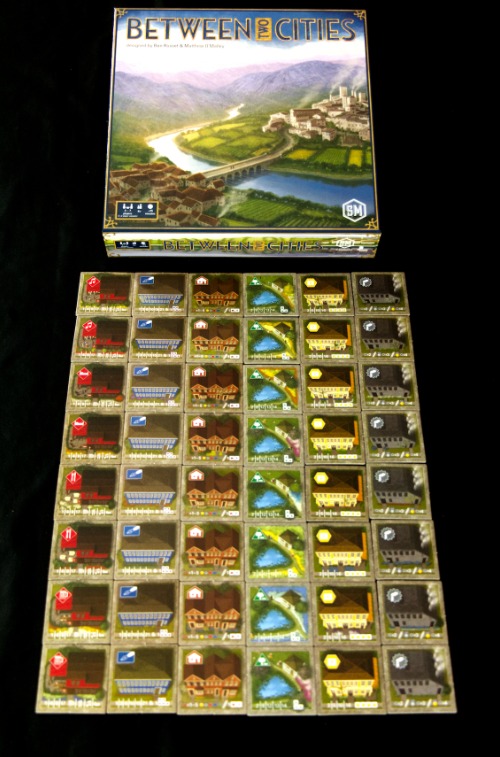
My wife likes, it my in-laws like it, I like it, and it’s great as a solo game. What more could I want? Personally, a little more meat in my games is what I prefer. However, Between Two Cities does what it set out to doin excellent fashion. And don’t let the player count on the box fool you; Between Two Cities is very good at two players as well as solo. Perhaps the tile draw can make things a bit more difficult, but that’s why there’s drafting, which helps mitigate any “bad” draws. All in all, Between Two Cities is a solid choice for any mix of game-weight preference.
Final Verdict
Welp, you’ve read the review, and now it’s time for the Final Verdict. Is it great? That’s a personal opinion. Is it missing something? Again, that’s opinion. Personally, I think it does what it does really well, and I can’t complain. Thus, I award Between Two Cities from Stonemaier Games a solid rating of Two Thumbs Up. I think the fact that it has an excellent solo variant and that two players is still really good helps this game a lot. Regardless, it’s solid, and I enjoy it. And the fun factor is what really matters.
Like This, Like That
This section is here to help you compare this game with other games you may be familiar with.
If you play strictly solo or with a partner at two players, don’t worry about what the box says; you’ll likely enjoy it at whatever player count you have. Fans of tile laying games or games that have different scoring based on the layout of tiles placed will surely enjoy Between Two Cities. Lastly, gamers who want a quick game or two, or who prefer a lighter fare of strategy, will more than likely enjoy this one.
Verdict Scale (Lowest to Highest)
The Final Verdict is based on a scale of 1-7, although this scale is not numbered. Instead, it uses thematically appropriate words to describe the performance of the game.
Tomatoes – This game was emotionally taxing and difficult to finish.
Uninspiring – This game had me daydreaming about other games.
Lackluster – This game had its moments, but it probably won’t see much table time.
Laodicean – This game is decent. It works. There’s a reason people like it.
Two Thumbs Up – This game is pretty dang good.
Captivating – This game is outstanding! It’s more than good; it’s practically a staple.
Standing Ovation – This is the best game you will ever play. Period.
Read short fiction inspired by board games at BGI’s stories page!
Visit Stonemaier Games on Facebook, Instagram, Twitter, and at their website.

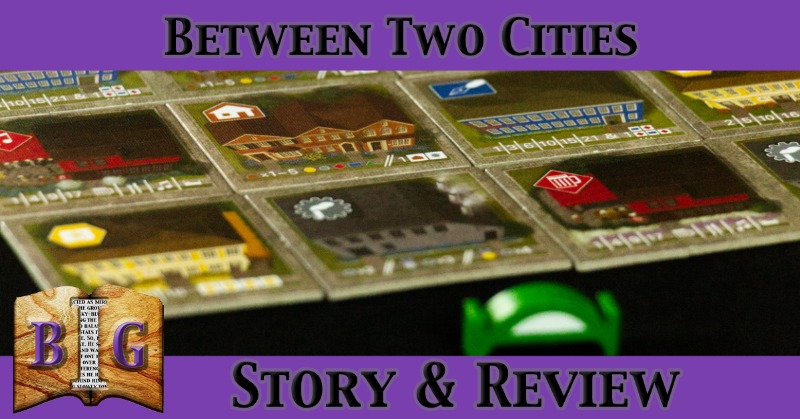


Pingback: Panorama Review: Stitching the Wilderness Together - Board Game Immersion